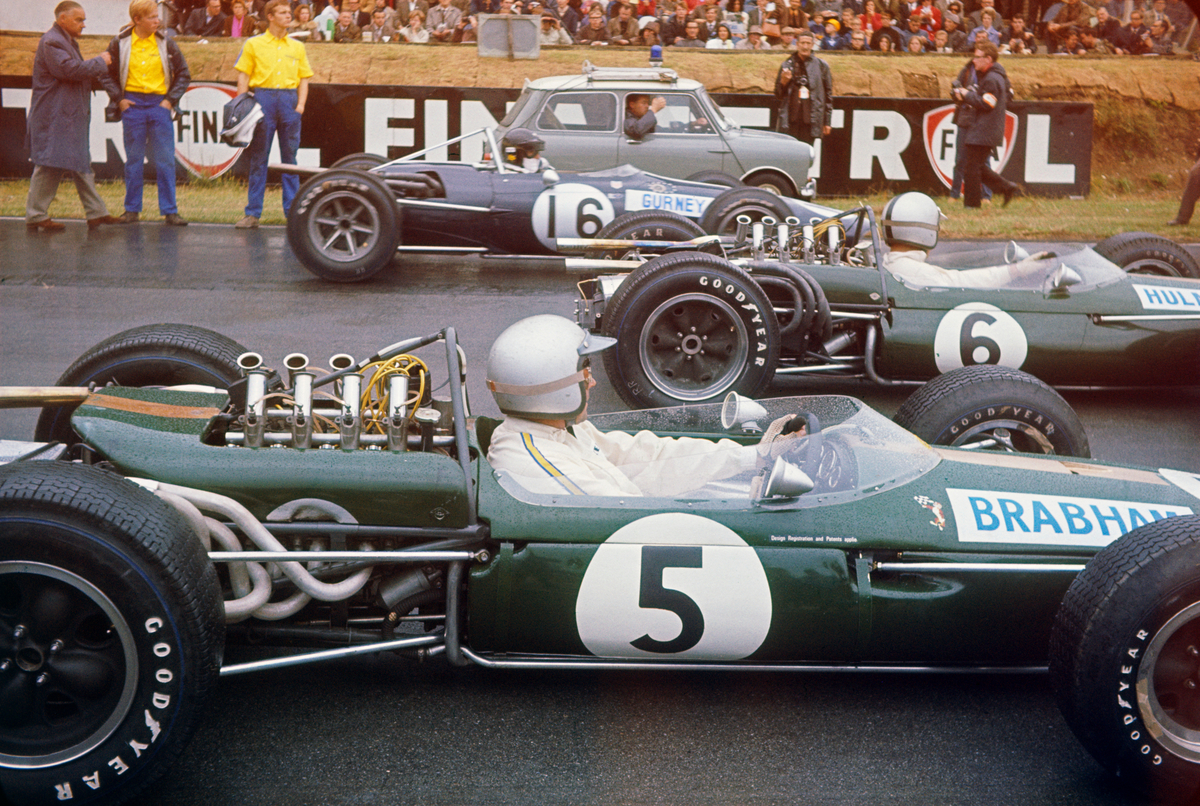McLaren’s 200th F1 victory is not just a milestone but a symbol of endurance, innovation and passion. From Bruce McLaren’s small workshop in Woking to the global stage of Formula 1, the team has carried the spirit of racing for more than six decades.
The first triumph came in 1968 at Spa-Francorchamps, when Bruce himself drove his creation to glory. Since then, names like Hunt, Lauda, Prost, Senna, Häkkinen and Hamilton have lifted the papaya flame higher.
Today, McLaren’s 200th F1 victory unites past and present, reminding us that true legends never fade.
Legacy in Numbers
| Team founded | 1963 (Bruce McLaren) |
| First F1 win | 1968 Belgian GP – Bruce McLaren |
| Most wins in a season | 15 (1988, from 16 races) |
| Milestone wins | 50th Prost 1986 Monaco • 100th Senna 1993 Brazil • 150th Alonso 2007 Monaco • 200th Norris 2025 Hungary |
| Drivers’ Champions | Fittipaldi (1974) · Hunt (1976) · Lauda (1984) · Prost (1985, 1986, 1989) · Senna (1988, 1990, 1991) · Häkkinen (1998, 1999) · Hamilton (2008) |
| Constructors’ titles | 1974 • 1984 • 1985 • 1988 • 1989 • 1990 • 1991 • 1998 • 2024 |
McLaren’s Formula 1 achievements summarised through milestones, world champions and constructors’ crowns.
Era by Era: The Evolution of McLaren Through the Decades
Bruce McLaren and the Pioneer Years (1960s)
When Bruce McLaren founded his own team in 1963, few could have predicted that a modest workshop in Woking would one day become a name celebrating its 200th Formula 1 victory half a century later. Bruce was not just a driver; he was a visionary and an engineer, a man who looked at a racing car as a canvas for ideas.
The first major milestone arrived in 1968 at Spa-Francorchamps. Bruce took victory driving his own car and entered history as only the third driver ever to win in a machine of his own making. The papaya-colored car became a symbol of courage and defiance against giants like Ferrari and Lotus.
Sadly, Bruce’s life was cut short in a testing accident in 1970, but his spirit lived on in every McLaren that followed. His words became the cornerstone of the team’s DNA:
“To do something well is so worthwhile that to die trying to do it better cannot be foolhardy. It would be a waste of life to do nothing with one’s ability, for I feel that life is measured in achievement, not in years alone.” – Bruce McLaren
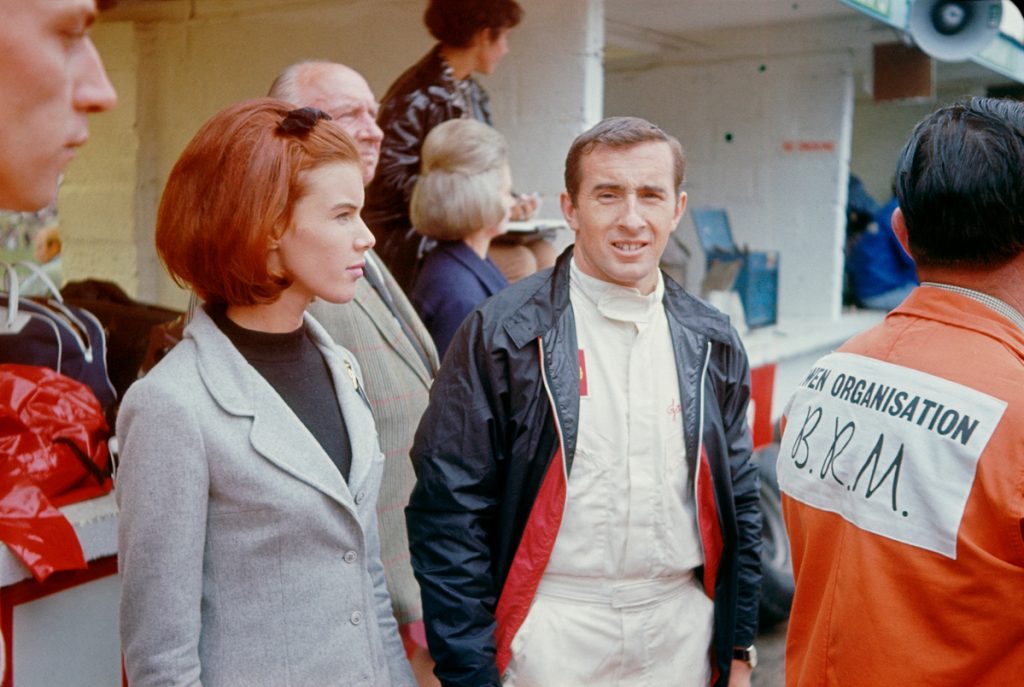
That philosophy transformed a small workshop into a factory of dreams and laid the foundation for McLaren’s first drivers’ and constructors’ titles in 1974. It was Emerson Fittipaldi who delivered that crown, a young Brazilian whose calm brilliance brought McLaren from dreamers to champions. With three wins that season, he secured both the Drivers’ and the team’s very first Constructors’ title, planting Woking firmly among Formula 1’s elite.
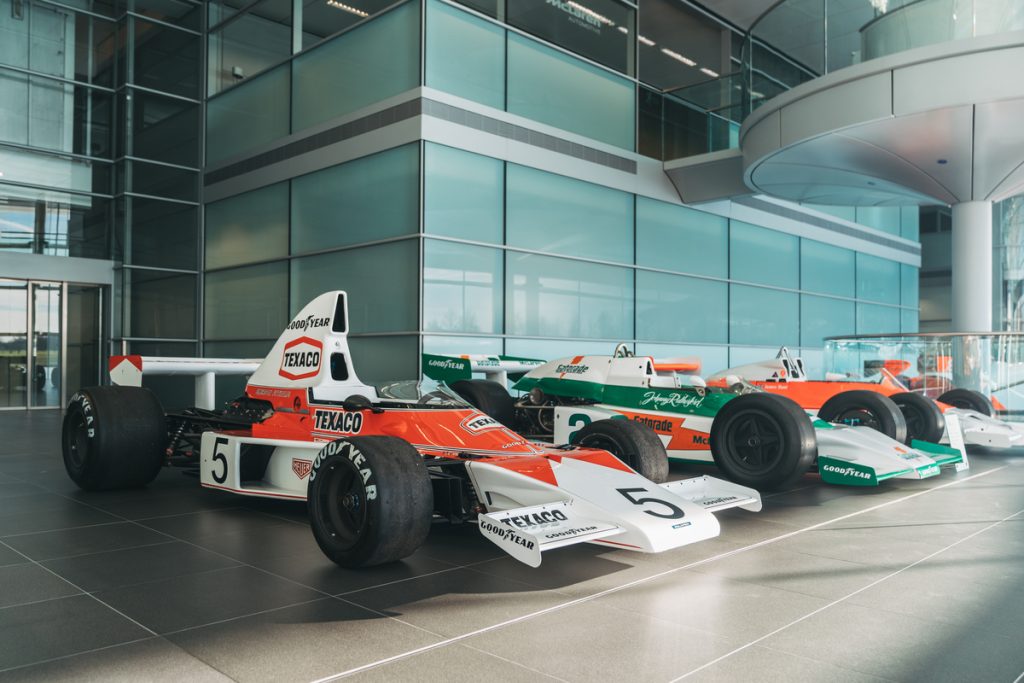
The Golden Era (1976–1991)
Hunt and Lauda – From Chaos to Calculation (1976–1984)
The first great blaze after Bruce and Fittipaldi came with James Hunt. In 1976 he delivered McLaren’s second world crown in one of the most dramatic seasons in Formula 1 history. Six wins, a year-long duel with Ferrari’s Niki Lauda, and a finale in torrential Fuji rain decided the title by a margin of one point. Hunt’s triumph, in the venerable M23 chassis, was chaos and brilliance in equal measure. It turned him into a cult hero and McLaren into a global name.
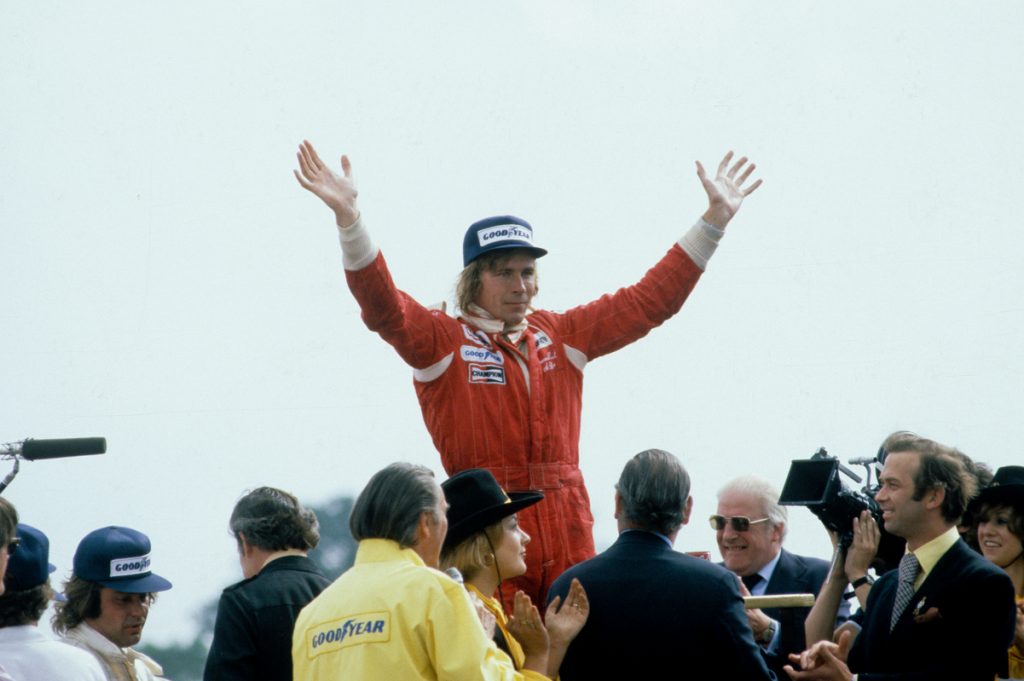
Yet Hunt’s success marked the end of an era. By the late 1970s McLaren’s form declined, and the team risked fading into mediocrity. The turning point came in 1980 when Ron Dennis merged his Project Four outfit into McLaren, creating McLaren International in 1981. Marlboro had sponsored the team since 1974, but under Dennis, and with John Barnard’s leadership, it became a full-scale modern programme. In 1981 McLaren also introduced Formula 1’s first full carbon-fibre monocoque, a Barnard innovation that reshaped both safety and performance for the sport.
Into this new order stepped Niki Lauda. The Austrian returned from retirement and added calm authority to McLaren’s garage. In 1984 he fought teammate Alain Prost in one of Formula 1’s fiercest internal battles. McLaren, powered by TAG-Porsche turbos, won 12 of 16 races that season. The title, however, came down to the final round in Portugal. Lauda’s second place secured the crown by half a point — the narrowest margin in F1 history.
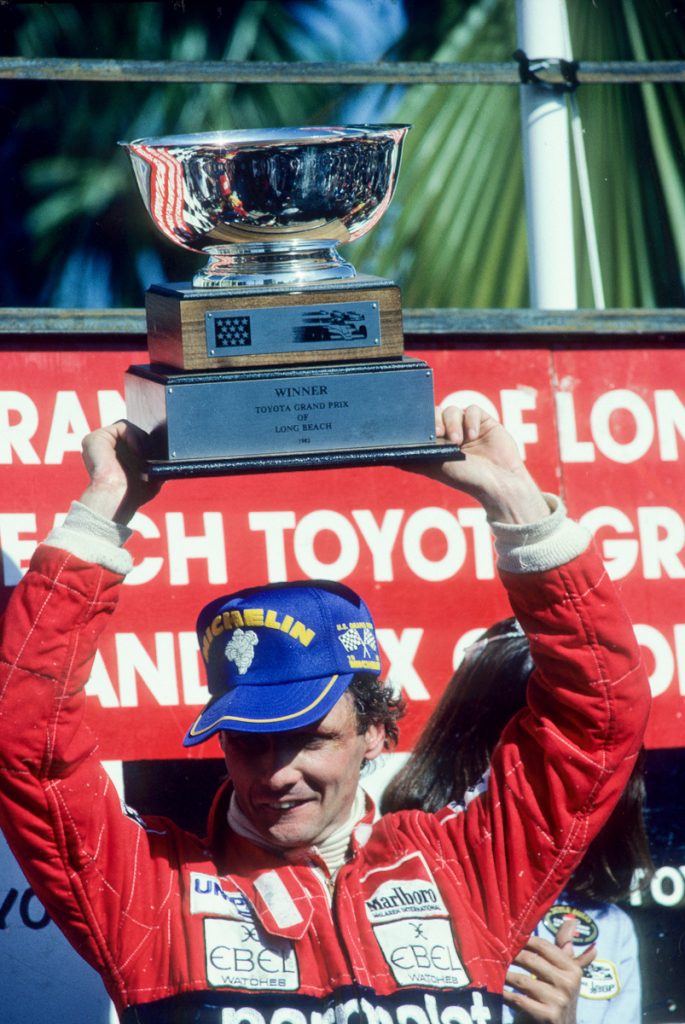
Hunt embodied chaos and instinct. Lauda stood for calculation and control. Together they defined McLaren’s transition, from the wild unpredictability of the 1970s to the structured dominance that would soon follow.
Prost and Senna – Perfection and Immortality (1985–1991)
With Niki Lauda gone, Alain Prost took command. The Professor made consistency a weapon, winning titles in 1985 and 1986. Every detail mattered to him, and his style was patient, analytical and ruthless in its precision. In 1989 he added a third crown, sealing his place as one of McLaren’s great architects of success.
Then came Ayrton Senna. The Brazilian poet of speed joined in 1988, creating perhaps the most explosive partnership the sport had ever seen. In the MP4/4, McLaren claimed 15 wins from 16 races. Senna took the title with eight victories, while Prost, despite seven wins, lost out under the dropped-scores system.
Their relationship soon turned toxic. Suzuka 1989 ended with a controversial collision that handed Prost the title. A year later, the same circuit saw Senna repay the debt with an equally brutal move. Rivalry and respect coexisted uneasily, but it produced a theatre unmatched in Formula 1.
Senna went on to secure two more titles in 1990 and 1991. His raw speed, wet-weather mastery and qualifying brilliance lifted McLaren to heights no rival could match. For him, racing was not calculation, it was spiritual combat.
Together, Prost and Senna delivered six Drivers’ crowns and six Constructors’ titles between 1984 and 1991. Their duels split garages, divided fans, and yet united McLaren with immortality. This was not just winning. This was perfection forged in fire.
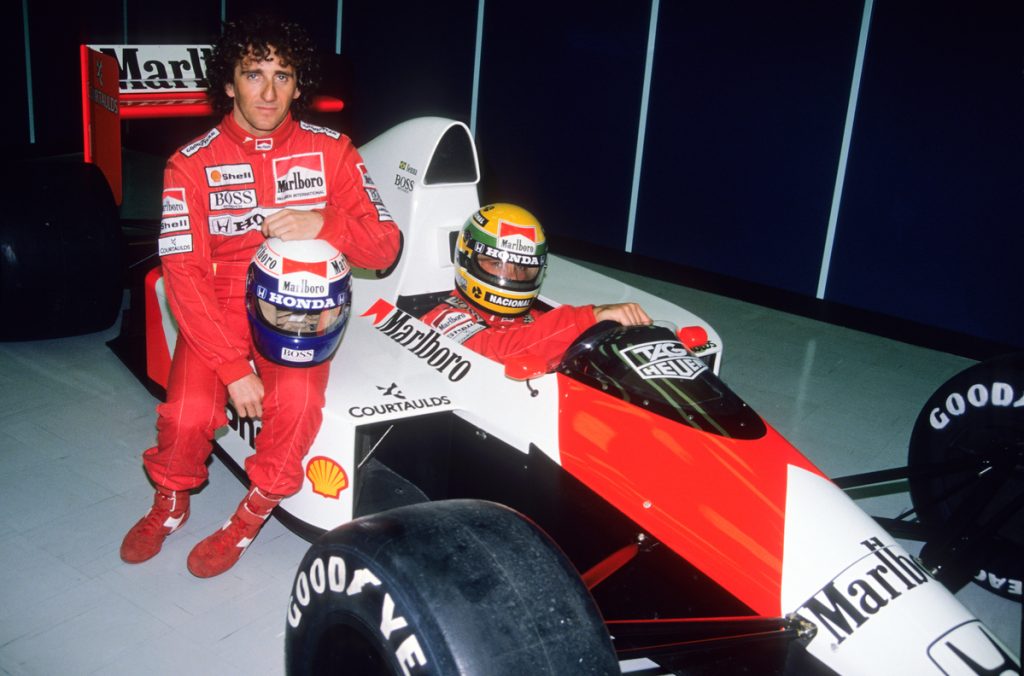
Häkkinen and McLaren’s Revival (1998–2000)
After the sun had set on Senna and Prost, McLaren entered a decade of searching. Ferrari, Williams and Benetton took the spotlight, while McLaren cycled through engines and lost direction. Ford and Peugeot brought no triumphs, and the team looked like a giant in the shadows.
Everything changed with Mercedes and the genius of Adrian Newey. The engines provided power and reliability, while Newey’s designs reshaped the team’s prospects. By the late 1990s, McLaren had rediscovered a winning formula.
At the centre stood Mika Häkkinen. The Flying Finn was quiet off track but devastating on it. He was not mystical like Senna, nor professorial like Prost. He was minimalism in motion, cold, sharp and efficient. Every lap was clean, stripped of excess, as if he merged with the machine.
In 1997 he claimed McLaren’s first win in years, a prelude to glory. The MP4/13 of 1998 became an icon, pairing Newey’s aerodynamic brilliance with Mercedes muscle. Häkkinen captured the title that year and defended it in 1999, duelling Michael Schumacher in battles that defined the era.
Their battle reached its peak at Spa-Francorchamps in 2000. There Häkkinen overtook Schumacher while simultaneously lapping Zonta, a move still regarded as one of the most breathtaking in F1 history.
That era gave McLaren pride and a moment of respite. It did not deliver the lasting dominance of Senna and Prost, but it stood as proof of resilience. Häkkinen became the symbol of revival, showing that the spirit of Woking still had wings.
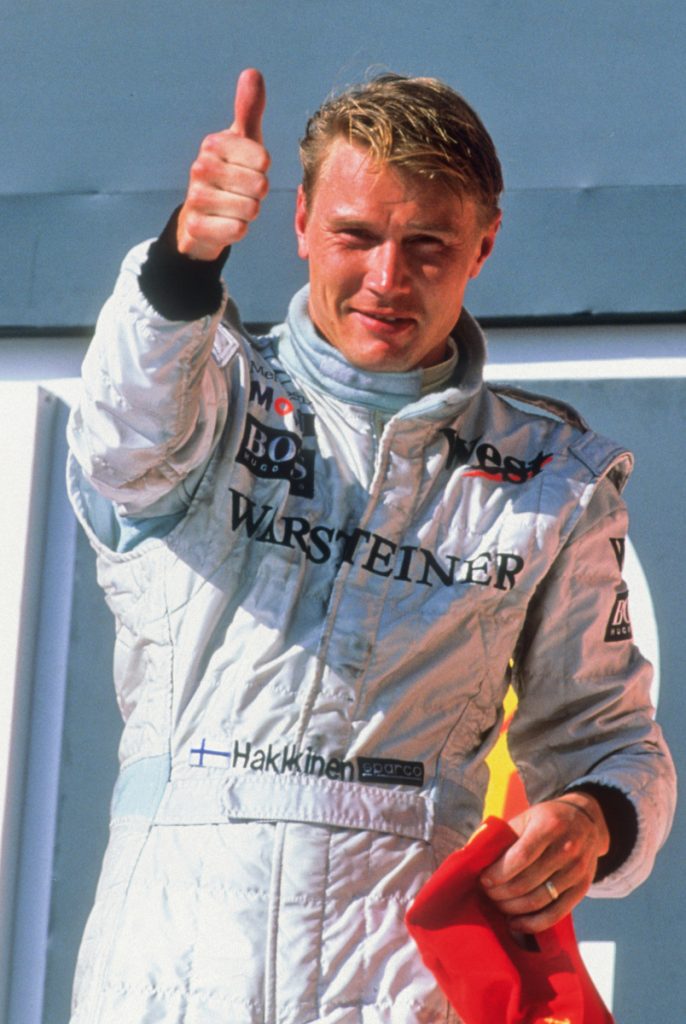
From Häkkinen to Hamilton – The Lost Chances (2000–2008)
McLaren did not vanish after Häkkinen’s titles. The early 2000s kept the team in the fight, even if Ferrari and Michael Schumacher held the upper hand. With David Coulthard and newcomer Kimi Räikkönen, McLaren stayed competitive. In 2003 Räikkönen lost the championship to Schumacher by just two points, proof that Woking still had teeth.
In 2005 McLaren fielded the blistering MP4-20, the fastest car of the season. Räikkönen won seven races, yet fragile reliability and Renault’s Fernando Alonso denied him the crown. By 2006, however, the decline became clear. The team ended the year without a single victory despite big names like Räikkönen and Juan Pablo Montoya.
The reset came in 2007. Lewis Hamilton, a rookie molded in McLaren’s academy, exploded onto the scene with podiums in his first nine races and victories in Canada and the USA. Alongside him stood reigning double champion Fernando Alonso. On raw speed McLaren had the strongest package, but the year imploded into political crisis. Amid the Spygate scandal, McLaren were excluded from the Constructors’ Championship, and an all-out civil war between teammates cost the team dearly. Hamilton lost the title in the final race by one point to Räikkönen, while Alonso left after a single turbulent season.
In 2008 Hamilton delivered redemption. At rain-soaked Interlagos, a last-corner pass on Timo Glock made him the youngest world champion at the time. It was McLaren’s return to the summit, and Hamilton’s arrival as the icon of a new era.
Our last home win! 🏆🇬🇧
— McLaren (@McLarenF1) July 6, 2023
Lewis Hamilton dominated Silverstone on this day in 2008! #BritishGP 🇬🇧 #ChromeIsBack pic.twitter.com/ShNj5ntKbj
Yet this triumph proved the last before a long drought. The years that followed showed how hard it is to turn potential into permanence.
From Drought to Revival – Norris, Piastri and the New Era (2009–2025)
Hamilton’s crown in 2008 was followed by years of frustration. Between 2009 and 2012, McLaren still won races with Hamilton and Jenson Button, but never mounted a full title challenge. In 2013 the team endured its first season without a single podium in decades. The reunion with Honda between 2015 and 2017 was meant to be a renaissance. Instead, it produced underpowered engines, chronic unreliability, and Fernando Alonso’s bitter “GP2 engine!” cry at Suzuka. That line symbolised the depth of McLaren’s decline.
The drought stretched nearly a decade. Then, at Monza in 2021, came a breakthrough. Daniel Ricciardo led home a famous one-two, McLaren’s first win since 2012. It ended 170 races of waiting and reminded the sport that Woking’s heartbeat was still alive.
The true foundation of revival, however, came from leadership and youth. CEO Zak Brown rebuilt the structure, first with Andreas Seidl and later Andrea Stella, bringing stability to the garage. On track, Lando Norris grew into the team’s cornerstone: fast, consistent, and charismatic. In 2023 he was joined by Oscar Piastri, a rookie whose calm precision evoked Häkkinen and whose hunger for victory echoed Bruce McLaren himself.
Technical vision followed the same path. The return of Mercedes engines in 2021 and bold mid-2023 design shifts lifted the team back into contention. The breakthrough arrived in 2024 with McLaren’s first Constructors’ title in 26 years. In 2025 the Norris–Piastri duo became unstoppable. At the Hungarian Grand Prix, Norris won, Piastri finished second, and McLaren claimed its 200th Formula 1 victory, also their fourth straight one-two, sealed by a 1.9‑second pit stop, the fastest of the season.
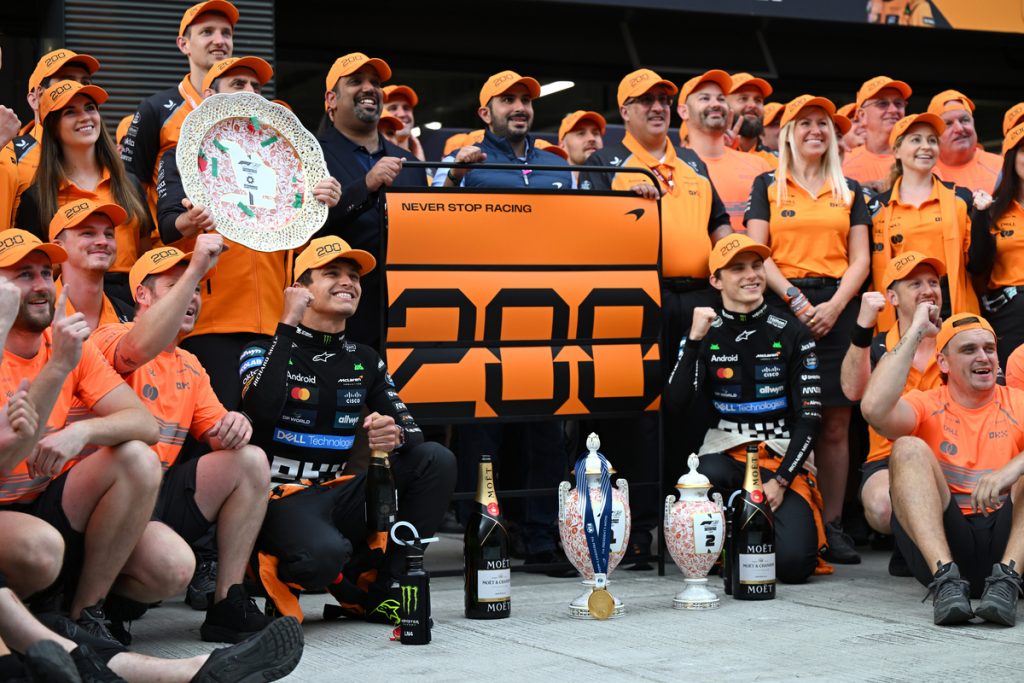
Analysis of the 200th Victory – What Does It Mean?
McLaren 200th F1 victory is not just a number. It is a moment that symbolizes a return among the greats and confirms that the spirit of Woking is alive and breathing again. At the 2025 Hungarian Grand Prix, Lando Norris and Oscar Piastri delivered a one-two finish and wrote a new page of history. McLaren became only the second team, alongside Ferrari, to reach a “double century” of triumphs.
Sporting significance
For Norris in particular, the McLaren 200th F1 victory was more than just a race win – it was his arrival as a true McLaren icon. Piastri, on the other hand, proved he has the composure required for future titles. McLaren thus reaffirmed its place within the circle of Formula 1’s true heavyweights, a team able to stand once again in the same breath as Ferrari, Red Bull, Mercedes and the other great dynasties.
Technical significance
This victory was the result of a consistent philosophy: a return to Mercedes engines, investment in aerodynamics, and bold upgrades. A 1.9-second pit stop was the fastest of the season, a symbol of perfect team synchronization. In the final laps Piastri, on fresher tyres, mounted heavy pressure on Norris, but the Briton defended calmly — proof that the package performs under the highest stress.
The car’s low-drag efficiency and stable high-speed downforce kept tyre degradation in check, which allowed Norris to absorb Piastri’s late charge.
Historical significance
McLaren’s milestone wins have always carried weight: the 50th by Alain Prost in 1986, the 100th by Ayrton Senna in 1993, the 150th by Fernando Alonso in 2007. Now it is Norris and Piastri’s turn, closing the circle from Bruce’s Spa triumph in 1968 to Hungary 2025.
Fan significance
For younger fans this was more than statistics. It was proof that McLaren is not only a legend of the past but also a winning force in the present. Zak Brown summed it up:
“That was as close to perfection as you can imagine.”
A Legend That Never Ages
From Bruce McLaren’s small workshop in Woking, filled with the smell of fuel and steel, to today’s futuristic factory with its glowing simulators and whispering wind tunnels, one thread has never broken. McLaren 200th F1 victory is not just a number in the record books. It is the same heartbeat that began in Spa 1968, the same fire carried by Hunt, Lauda, Prost, Senna, Häkkinen, Hamilton, and now Norris and Piastri.
This milestone is more than history. It is a bridge. On one side stands Bruce, lifting his first trophy under the Belgian sky. On the other, Norris and Piastri in Budapest, fists raised high as the papaya team celebrates its return to the summit. The distance between those images is vast, yet the emotion is identical. Triumph does not age.
For the fans, it is proof that McLaren is not only a legend of the past but a force of the present. The papaya orange once told stories of nostalgia, now it signals victories again. Each win writes a new page, each chapter adds weight to the legend.
The McLaren 200th F1 victory is not the end of a journey. It is a reminder that true greatness renews itself with every lap and every generation. From the smell of petrol to the precision of digital aerodynamics, McLaren’s story continues to evolve.
A legend does not fade. It changes shape, finds new voices, and lives on in every driver who dares to wear the papaya.
Feature Image Credit: McLaren
